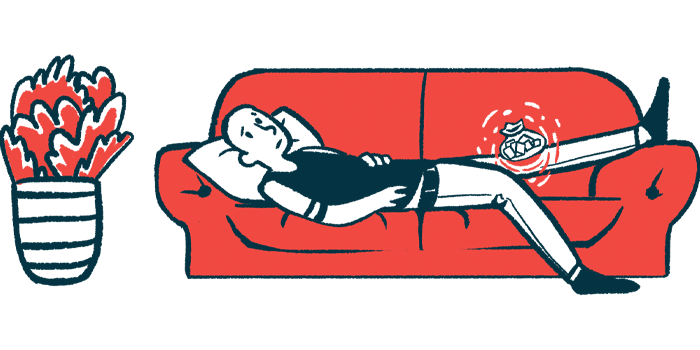Treatments fail to ease muscle, joint pain for most with hEDS, HSD
For some with hypermobility, exercise helped reduce pain burden: Study

Most people with hypermobile Ehlers-Danlos syndrome (hEDS) or hypermobility spectrum disorders (HSD) report that therapeutic approaches, including medications and other therapies, do not help ease their muscle and joint pain.
Indeed, fewer than 30% of hEDS and HSD patients, when given a list of 17 treatment modalities in a questionnaire, reported experiencing improvements with any of them.
Among the small proportion who considered their pain eased with treatments, exercise was reported to contribute to pain reduction by both groups of patients. Meanwhile, only those with HDS considered that physical therapy also helped ease their pain, the data showed.
“This study identified patient perceptions on treatments and referrals that improved or made their pain worse,” the researchers wrote.
The questionnaire included strategies from opioids and nutritional changes to splints and braces and topical medications.
“Owing to the complex nature of pain in patients with hEDS/HSD, a multidisciplinary approach is needed to improve patient outcomes of reduced pain and improved quality of life,” the researchers wrote. “These findings provide a starting point for future treatment guidelines, decision aids, and research on patient-reported outcomes.”
The study, “Treatment Modalities, Pain Response, and Referrals for Hypermobile Ehlers-Danlos Syndrome and Hypermobility Spectrum Disorders: A Retrospective Study,” was published in the journal Mayo Clinic Proceedings: Innovations, Quality & Outcomes by a team led by researchers in the U.S.
Both hEDS and HSD, which is diagnosed when hEDS diagnostic criteria are not met, occur when the body’s connective tissues fail to provide proper support to other tissues. This causes joints to become hypermobile, or stretch farther than is expected or normal.
“Primary symptoms of hEDS/HSD include chronic muscle and joint pain, [joint] subluxations/dislocations, headache, brain fog, and fatigue,” the researchers wrote. Further, according to the team, “approximately 70% of patients with hEDS/HSD self-report having or are diagnosed with fibromyalgia, a condition associated with widespread muscle and joint pain.”
Joint and muscle pain in hEDS/HSD ‘not well understood’
These symptoms contribute to increasing the pain burden in people with hEDS or HSD. However, “reduction of pain in patients with hEDS/HSD is not well understood and is complicated by the highly [variable] presentation of the condition,” the team wrote.
To learn more, the researchers retrospectively analyzed self-reported data from 90 adults with hEDS and 179 with HDS who were diagnosed at the Mayo Clinic Florida EDS Clinic.
At diagnosis, the patients — mostly women and about 35 years of age — completed a questionnaire about their pain. All reported hypermobility-related pain and most had joint (86.7% to 91.9%) and muscle pain (71.1% to 82.7%), with muscle pain being reported significantly more often by individuals with HDS.
HDS patients also had a higher rate of coexisting fibromyalgia relative to those with hEDS (75.2% vs. 24.8%), so they were considered to have more generalized pain. Both groups of patients rated their worst joint pain as severe.
About a year after their diagnosis, participants were asked whether clinical referrals and/or treatment approaches had eased their pain.
The most frequently used medications were nonsteroid anti-inflammatory medications (45.6%-53.1%), followed by acetaminophen (35.6%-43.6%), and muscle relaxers (15.6%-28.5%). Other medications, including cannabinoid derivatives and opioids, were used by fewer than 20%.
Among the 17 total treatment modalities reported by participants in the questionnaire, the most common were rest, heat therapy, massage, oral medication, and exercise.
Overall, fewer than 15% of patients (hEDS, 14.4%; HSD, 10.1%) reported a reduction of hypermobility pain from any of the treatments. Also, fewer than 25% reported easing of muscle pain (hEDS, 22.2%; HSD, 17.7%) and fewer than 30% reported an easing of joint pain (hEDS, 26.4%; HSD, 21.1%).
Significantly more patients reported less vs. more pain with exercise
Among people who reported pain reduction with any treatment modality, a significantly greater proportion of those with hEDS reported that exercise eased muscle pain (75% vs. 44.6%) and joint pain (73.9% vs. 45.3%) relative to those reporting a worsening with exercise.
There was no treatment modality that hEDS patients clearly reported as beneficial for hypermobility pain. A greater proportion of them reported hypermobility pain reduction with exercise compared with those reporting worsening (76.9% vs. 46.8%), but this difference failed to reach statistical significance.
A significantly greater proportion of people with HDS considered that exercise and physical therapy contributed to reducing all types of pain.
The [treatment] modality that patients with hEDS or … HSD reported to be the most beneficial at reducing hypermobility, joint, and muscle pain was physical activity/exercise.
Also, more hEDS participants reported that topical medications made their muscle pain worse, compared with those who reported pain reduction with such treatments (48.2% vs. 18.8%). A greater proportion of those with HSD considered that injections made their joint pain worse (28.3% vs. 10.8%).
Overall, “the modality that patients with hEDS or … HSD reported to be the most beneficial at reducing hypermobility, joint, and muscle pain was physical activity/exercise,” the researchers wrote. “In contrast, [physical therapy] was reported to [ease] pain only in patients with HSD.”
Most patients reported that clinical referrals helped ease their symptoms. Specifically, about 75% of the people in both groups considered referrals to genetics, eye and vision care, and acupuncture beneficial, while approximately 60% reported that mind-body therapy eased their pain.
Additionally, a referral to psychology was deemed beneficial by 65% of those with hEDS and 40% of HDS patients. Referral to pain rehabilitation was considered favorable by most HDS patients (65%), but by one quarter of those with hEDS.
The referral findings “contrasted [with] findings with treatments/therapies, which overall patients reported did not improve their pain,” the researchers wrote. Among the reasons cited by the investigators were that “many of the treatments are patient administered rather than physician-prescribed therapies, the diversity of treatments examined in the study, and the lack of information on dose or method of treatment.”
Overall, the team noted that “future research is needed to better understand the most effective strategies to reduce pain in hEDS/HSD patients.”







